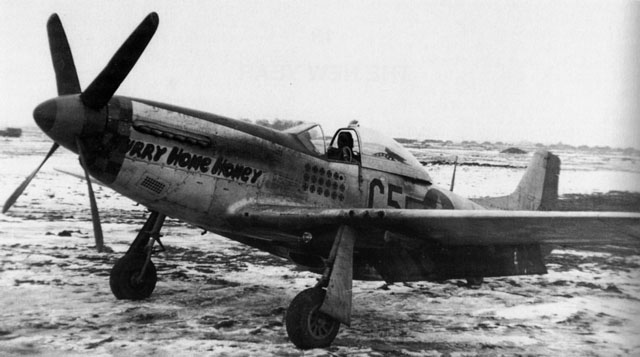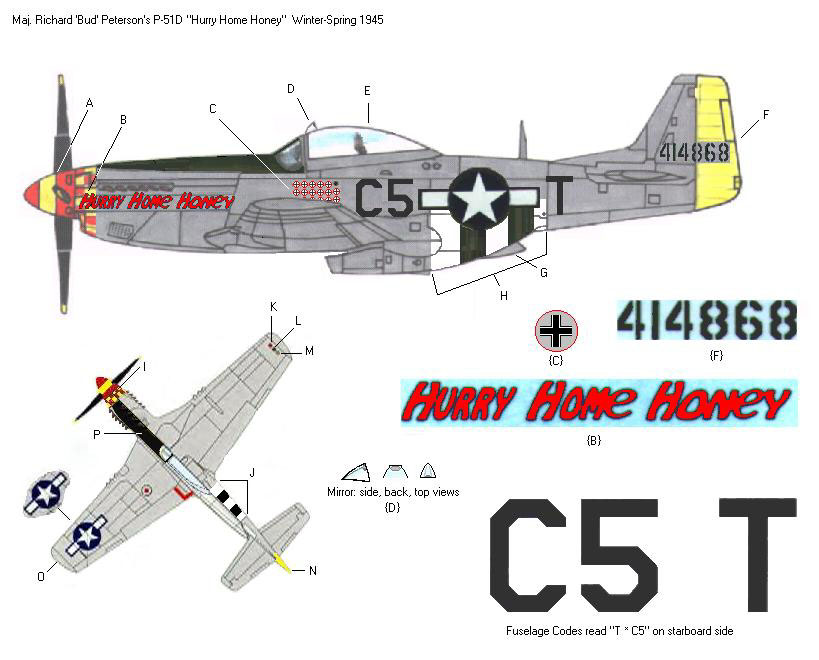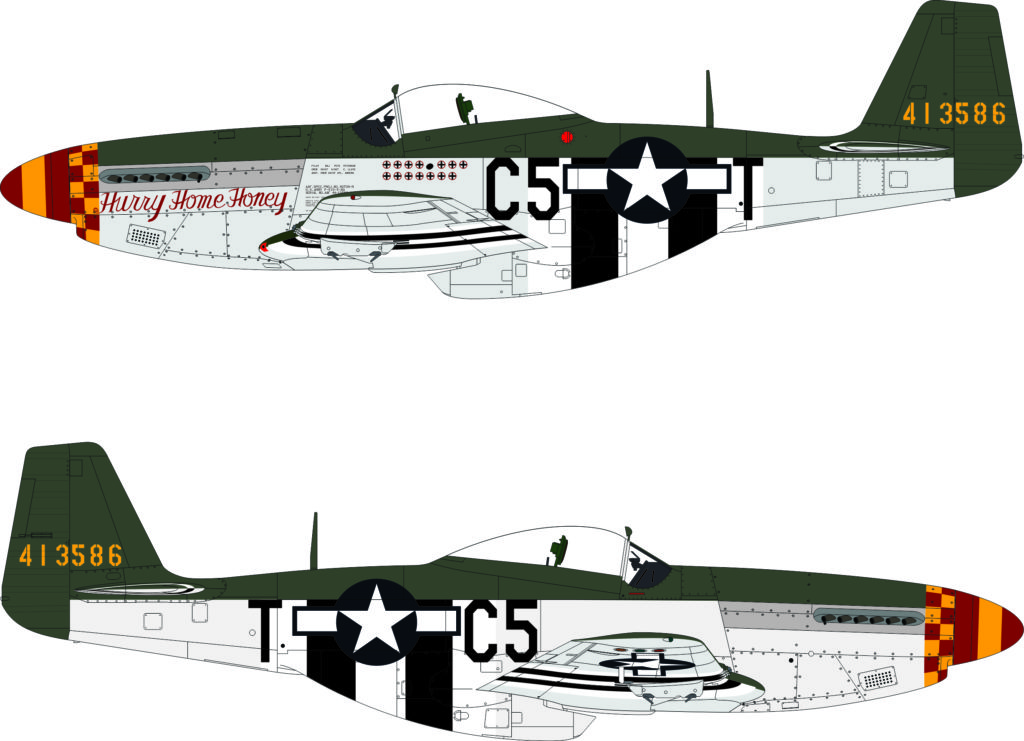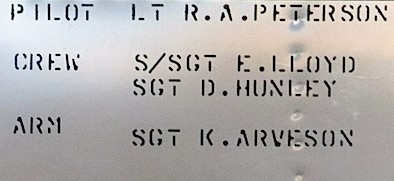357th FG Profile

Major Richard “Bud” Peterson” P-51D Mustang “Hurry Home Honey” 364th FS, 15 1/2 Victories

Winter “44 thru Spring 45”
Modeler Tips:
Side View Notes:
A. Rear red band on propeller boss extends onto spinner to leading edge of blades when in neutral pitch. Determine width of yellow band by dividing remainder of spinner evenly.
B. “Hurry Home Honey” in red with thin black outline, note that the name extends into the checkerboard and the name extends to the firewall.
C. Victory Board. 17 black crosses w/black & white border, each surrounded by red circle. 15 in 5 columns of three ahead of signal pistol chute. 2 under the chute itself set slightly higher than the adjacent rows.
D. Clear perspex quarter dome with oval mirror place inside apex. Not standard equipment, can be made from scratch using Squadron Brand “Heat &Smash” Canopy Film. I used sandpaper to even up the shape of the front corner of an extra Spitfire Mk V “clipped wingtip” from my surplus parts as a smash mold. Refer to photo of P-51D on Modeler’s Guide front page.
E. There were no antenna wires installed on this aircraft.
F. Tail Number- black “414” on fin, black” 868″ on rudder. Note that a rectangular area was masked over on the rudder to prevent over painting of the tail number.
G. Sides of radiator ventilation flap are natural aluminum.
H. Reduced invasion stripes come up to middle of star & bar insignia. Full width, from aft fuselage bulkhead onto rear wing fillet. Note that third white stripe is narrower than others.
Upper & Lower View Notes:
I. Width of checkers reduced on underside in order to fit evenly on the narrow surfaces of the chin scoop area.
J. Repeat of item “H” from Side View Notes. K,L,M. Red, Green, Yellow navigation lights- circular and flush with wing panel.
N. Yellow rudder.
O. Formation Lights- Red (Port) and Green (Starboard)
P. Glare shield is flat black and tapers away from upper cowl seam toward center of aircraft from forward bulkhead to propeller boss.
Overall Modeling Tips:
*Paint on the flat colors first (invasion stripes, yellow rudder, glare shield) first- then mask off those features and paint the remainder of the aircraft in natural aluminum color. Most metal colors will be marred or
removed by masking materials and should therefore be applied last.
*After building several 357th A/C over the past 30 years, I recommend painting the nose area forward of the exhaust cutout yellow when the flat features are painted. Then when decal time comes, carefully cut away the
yellow squares from the checkerboard decal and apply the remaining strip of red checkers to the nose.
This method significantly reduces the potential for bubbles, and wrinkles plus it makes exact alignment of the decal easier.
*Prior to assembly, wash clear plastic parts with a mild glass cleaner and gently wipe dry. Then use a Q-Tip to evenly spread clear liquid floor wax (Future Brand seems to get the best results) on both inside & outside.
Protect from dust and let dry for at least 2 hours. The wax fills in microscopic flaws and creates an even gloss that is clearer & shines brighter than the original plastic underneath.


Bullseye Model Aviation Decals – Courtesy of Scott Brown
BMA481009 1:48 Bulleye Model Aviation Decals – P-51D – Yoxford Boys #1

